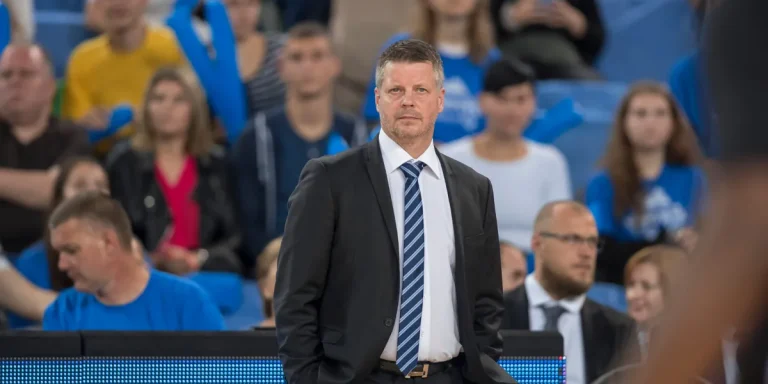What Does Mean Bonus In Basketball?
In the world of basketball, the term “Bonus” is a game-changer that adds complexity to the hoops saga. Imagine the scoreboard ticking down, tension building with each dribble, and suddenly, a team enters the bonus. It’s not just a rule; it’s a shift in dynamics, shaping the game in a new way. Understanding what the bonus means is crucial in the basketball playbook. Let’s explore this game-changing concept, delving into the significance it holds on the hardwood.
When a team commits a certain number of fouls in a period, the other team gets free throws for each foul after that.
Understanding the Bonus in Basketball
In the realm of basketball, the term “bonus” refers to a pivotal phase of the game, introducing a strategic element that can sway the momentum on the court. When a team accumulates a specified number of fouls, commonly five in the NBA and WNBA, within a specified quarter, they enter what is known as the bonus.

This designation opens the door to free-throw opportunities for the opposing team with each subsequent defensive foul. Even fouls committed during non-shooting moments, such as loose-ball situations, trigger these automatic free-throw attempts. The bonus system serves as a disciplinary measure, penalizing a team for exceeding the foul limit and offering the opponent a chance to score without the clock ticking away.
How does the Basketball Bonus Rule Work?
The bonus rule in basketball serves as a pivotal aspect of the game, impacting team strategies and gameplay dynamics. Here’s a breakdown of how the bonus rule works:
Setting the Threshold: The bonus rule entails determining the specific number of fouls a team must accumulate within a designated period to enter the bonus. Once this threshold is reached, the opposing team gains free-throw opportunities for each subsequent foul committed by the penalized team. This threshold varies depending on the league and level of play, with professional, college, and youth basketball leagues often having different criteria.
Application in Different Leagues: It’s important to note that there are variances in bonus rules across different basketball leagues. While the fundamental concept remains consistent, the exact number of fouls required to enter the bonus and the subsequent penalties may differ. Professional leagues such as the NBA typically have higher foul thresholds compared to college or youth basketball leagues.
Tracking Foul Counts: Coaches, players, and referees must actively monitor foul counts throughout the game to anticipate bonus situations. Being aware of the foul count allows teams to adjust their strategies accordingly, whether it involves playing more aggressively to draw fouls or exercising caution to avoid entering the bonus. Additionally, referees play a crucial role in enforcing the bonus rule and accurately signaling when teams are in bonus situations.
Simply put, knowing how the bonus rule works is crucial for players and coaches. It affects how teams defend, attack, and manage the game. Handling bonus situations well can give teams an edge and make them more likely to win on the basketball court.
How does the Bonus vary in Different Basketball Leagues?
The bonus rule in basketball can vary across different leagues, influencing the flow and dynamics of the game. Here’s a brief overview of how it differs:

NBA Basketball Bonus Rule
In the NBA, teams enter the bonus when they have committed a certain number of fouls, usually five, in each quarter. Once in the bonus, the other team gets free throws for every foul. In the last two minutes of each quarter, teams enter the bonus sooner, after the fourth foul. This helps players, coaches, and referees manage fouls and plan strategies during games.
WNBA Bonus Rules
In the WNBA, teams enter the bonus when they commit five fouls in a quarter. Once in the bonus, the opposing team gets free throws for every foul. Similar to the NBA, in the last two minutes of each quarter, teams enter the bonus after four fouls. These rules aim to maintain fairness and regulate gameplay in WNBA matches.
FIBA Bonus Rules
In FIBA basketball, teams enter the bonus after committing five or more fouls in a quarter. Once in the bonus, the opposing team shoots free throws for every foul. Unlike the WNBA, the bonus carries over from quarter to quarter in FIBA. This means if a team is in the bonus at the end of one quarter, they stay in the bonus at the start of the next. These rules add a unique dynamic to foul management and gameplay in FIBA basketball.
Bonus Rules in NCAA College Basketball
There are special bonus rules that affect how fouls are handled In college basketball. Teams can commit up to six fouls per half before the other team gets free throws. But once a team commits ten fouls in a half, the other team gets two free throws each time—a rule called the double bonus. Knowing these rules well is important for teams to use fouls to their advantage and win games.
High School Bonus Rules
Moving from college to high school basketball, there’s a change in bonus rules. In high school games, it’s a bit simpler. When one team commits seven fouls in a half, the other team goes into the bonus. This means they get a free throw for every foul. Just like in college, the count resets at the start of each half. This affects how teams handle fouls and plan their game strategy on the high school court.
Double Bonus Rule
There is a special rule called the double bonus In college basketball. It kicks in when a team commits ten fouls in a half. With the double bonus, the fouling team gets two free throws every time there’s a foul. This makes foul situations important, especially in the second half of the game. Teams have to be careful with their defense to avoid giving away easy points.
Last Two Minutes of NBA Bonus Rules and Regulations
As the clock winds down in the last two minutes of an NBA game, the dynamics of the bonus rule undergo a specific adjustment. During this critical period, teams can commit only one defensive foul before entering the bonus. Any subsequent defensive fouls result in immediate free-throw opportunities for the opposing team. This unique rule aims to prevent intentional, continuous fouling by a trailing team to stop the clock and regain possession, ensuring a fair and competitive conclusion to the game.

Defensive Play in the Bonus
When a team finds itself in the bonus, strategic defensive play becomes paramount. Coaches and players must make calculated decisions to avoid unnecessary fouls that could grant the opponent free scoring opportunities.
However, if the bonus is inevitable, defensive teams might strategically foul players with lower free throw percentages, temporarily halting the clock and limiting the chances of additional scoring from free throw attempts. This strategic maneuvering adds an extra layer of depth to the game, where defensive decisions can significantly impact the outcome during bonus situations.
Offensive Fouls about the Bonus
When it comes to the bonus in basketball, the treatment of offensive fouls differs from defensive fouls. Offensive fouls, including charging, push-offs, and screens, do not contribute to the team’s foul count to enter the bonus. This unique distinction means that, unlike defensive fouls, offensive fouls don’t automatically grant the opposing team free-throw opportunities. Instead, the offensive team retains possession of the ball, allowing them to reset and initiate a new play.
Explaining the 1-and-1 Bonus in Basketball
In the intricate landscape of basketball rules, the 1-and-1 bonus system is a noteworthy feature that comes into play once a team surpasses a certain foul threshold. When a team accumulates a predetermined number of team fouls (typically seven) in a single quarter or half, the opposing team is granted a unique free throw opportunity. The term “1-and-1” denotes that the shooter has the chance to make the first free throw, and only if successful, do they earn a second attempt.
Significance of Bonus in Basketball
Understanding the purpose and significance of the bonus in basketball reveals its role as a regulatory mechanism, preventing teams from excessively fouling opponents. The bonus system acts as a deterrent, penalizing teams for crossing a specified foul limit and promoting fair play. By allowing the team in the bonus the opportunity to score uncontested free throws, it balances the scales and enforces a level of discipline within the game. Beyond its regulatory function, the bonus system adds a strategic element, influencing teams to carefully manage their fouls and contributing to the nuanced tactics of the sport.
Possibility of Both Teams Entering the Bonus
In the heat of a closely contested basketball game, it’s entirely plausible for both teams to find themselves in the bonus simultaneously. This scenario typically unfolds in the late stages of a game when the score is tight, and teams strategically use intentional fouls to conserve time or prevent the opposition from attempting a three-pointer.

As both teams accumulate fouls, the bonus becomes a shared reality, intensifying the pressure and strategic decision-making on the court. This unique circumstance adds an element of suspense, as each foul has the potential to swing the game in favor of the opposing team.
Bonus Period in the NBA
In the NBA, once a team enters the bonus, the impact lingers for the remainder of the quarter. The bonus period extends from the moment a team reaches the specified foul limit (usually five team fouls) until the end of that quarter. This means that any defensive foul committed by the penalized team results in the opposing team being awarded free throws for the duration of the quarter. Consequently, teams accumulating fouls early in a quarter face a defensive challenge, creating scoring opportunities for their opponents with each subsequent foul. The duration of the bonus period adds a strategic layer to the game, emphasizing the importance of disciplined defense throughout the quarter.
Consequences of Teams Operating Below the Bonus Cap
For teams operating below the bonus cap, meaning they have not accumulated the specified number of fouls to enter the bonus, defensive fouls during non-shooting moments do not result in automatic free throws for the opposing team. Instead, the offensive team takes the ball to the sideline to initiate a new play from out of bounds.
This approach not only stops the clock but also allows the defensive team to reset their defense. Operating below the bonus cap provides a tactical advantage, allowing teams to strategically use fouls without the immediate risk of granting free throw opportunities. This dynamic adds a layer of decision-making complexity, as teams must weigh the benefits of defensive fouls against the potential risks associated with entering the bonus.
Distinguishing Between NCAA and NBA/WNBA Bonus Systems
While the essence of the bonus remains consistent across basketball leagues, distinguishing features emerge when comparing the NCAA to the NBA/WNBA bonus systems. Two significant differences stand out: Firstly, in the NCAA, bonus free throws begin with one automatic attempt, escalating to two after the tenth foul in a half.
In contrast, the NBA and WNBA start with two free throw attempts once the bonus is reached. Secondly, the NCAA operates with two halves, whereas the NBA and WNBA structure their games into four quarters. These distinctions highlight the nuanced variations in bonus regulations, contributing to the unique identity of each basketball league.
FAQs
How does the bonus work in NBA basketball?
In the NBA, a team enters the bonus when they accumulate five team fouls in a quarter. Every subsequent defensive foul results in the opposing team getting two free throws, impacting the game’s flow and strategy.
What is the difference between the bonus in NCAA and NBA basketball?
Unlike the NBA, NCAA basketball has a one-and-one free throw system until the tenth team fouls. After the tenth foul, known as the double bonus, the offensive team gets two free throws. Understanding these distinctions is vital for players and fans to grasp the nuances of each league’s bonus rules.
Final Words
In the dynamic world of basketball, the bonus stands as a strategic pivot, influencing the ebb and flow of the game. Whether navigating the tactical intricacies in the NBA, NCAA, or other leagues, understanding the bonus is akin to unlocking a playbook of strategic possibilities. From regulating fouls to shaping scoring opportunities, the bonus is not just a rule; it’s a game-changer. Mastering its nuances adds depth to the basketball narrative, where each foul becomes a potential turning point. As the clock ticks down and victories are etched on the scoreboard, the bonus remains an integral part of the captivating story woven on the hardwood.

Passionate basketball player striving for excellence on and off the court. Dedicated to the game since youth, I have honed skills through years of practice. Explore my journey, gear reviews, and dunking tips. Let’s elevate our game together!







